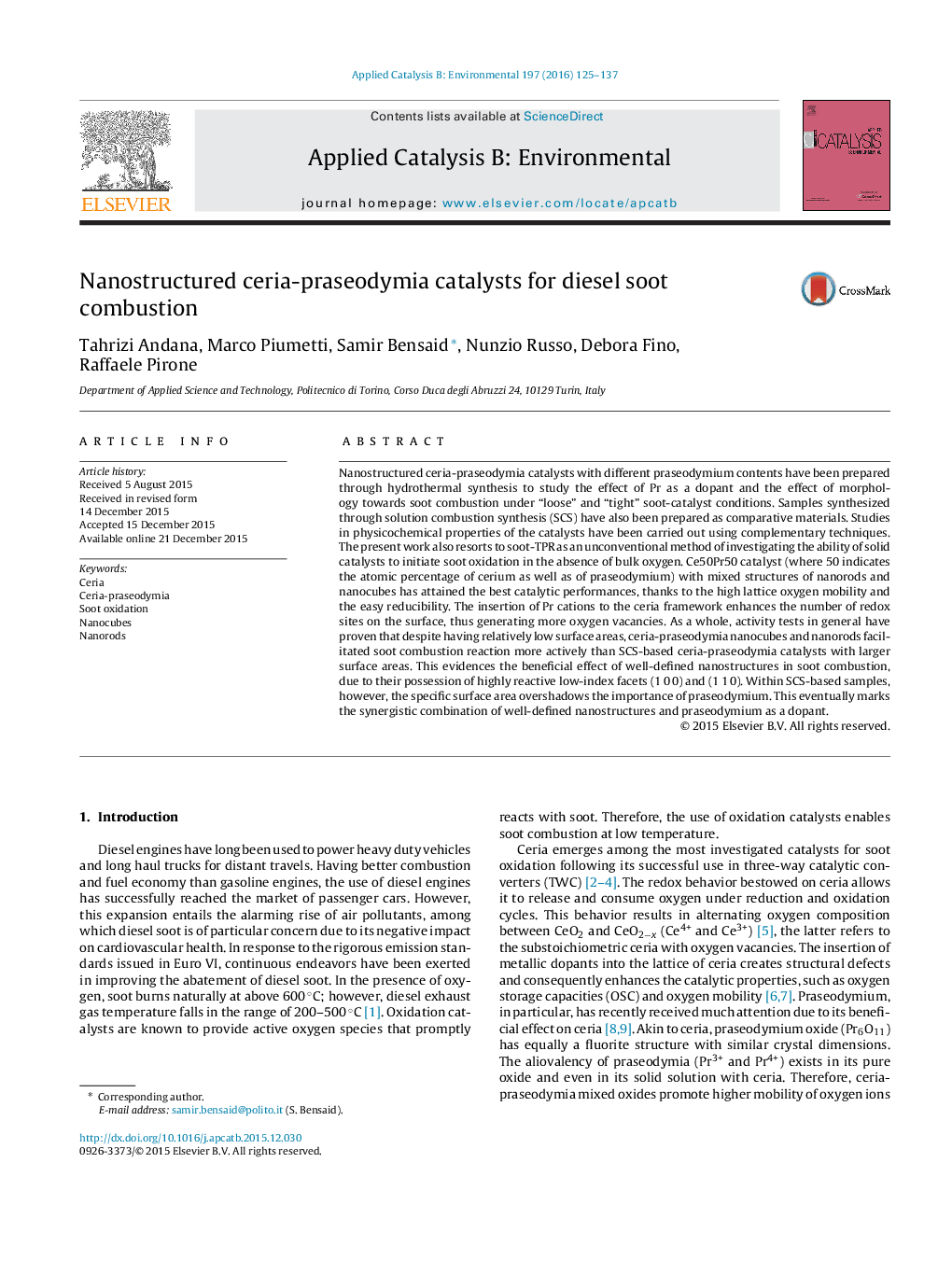| کد مقاله | کد نشریه | سال انتشار | مقاله انگلیسی | نسخه تمام متن |
|---|---|---|---|---|
| 45504 | 46413 | 2016 | 13 صفحه PDF | دانلود رایگان |

• Nanostructured cubic ceria-praseodymia catalysts were synthesized.
• SCS-based and nanostructured catalysts were tested for CO and soot oxidation.
• Catalysts containing 50% Pr showed the highest oxygen storage capacity.
• Nanostructured catalyst containing 50% Pr showed the highest soot combustion activity.
• Low-index facets (1 0 0) (1 1 0) in Ce–Pr catalysts are highly reactive for soot oxidation.
Nanostructured ceria-praseodymia catalysts with different praseodymium contents have been prepared through hydrothermal synthesis to study the effect of Pr as a dopant and the effect of morphology towards soot combustion under “loose” and “tight” soot-catalyst conditions. Samples synthesized through solution combustion synthesis (SCS) have also been prepared as comparative materials. Studies in physicochemical properties of the catalysts have been carried out using complementary techniques. The present work also resorts to soot-TPR as an unconventional method of investigating the ability of solid catalysts to initiate soot oxidation in the absence of bulk oxygen. Ce50Pr50 catalyst (where 50 indicates the atomic percentage of cerium as well as of praseodymium) with mixed structures of nanorods and nanocubes has attained the best catalytic performances, thanks to the high lattice oxygen mobility and the easy reducibility. The insertion of Pr cations to the ceria framework enhances the number of redox sites on the surface, thus generating more oxygen vacancies. As a whole, activity tests in general have proven that despite having relatively low surface areas, ceria-praseodymia nanocubes and nanorods facilitated soot combustion reaction more actively than SCS-based ceria-praseodymia catalysts with larger surface areas. This evidences the beneficial effect of well-defined nanostructures in soot combustion, due to their possession of highly reactive low-index facets (1 0 0) and (1 1 0). Within SCS-based samples, however, the specific surface area overshadows the importance of praseodymium. This eventually marks the synergistic combination of well-defined nanostructures and praseodymium as a dopant.
Figure optionsDownload as PowerPoint slide
Journal: Applied Catalysis B: Environmental - Volume 197, 15 November 2016, Pages 125–137